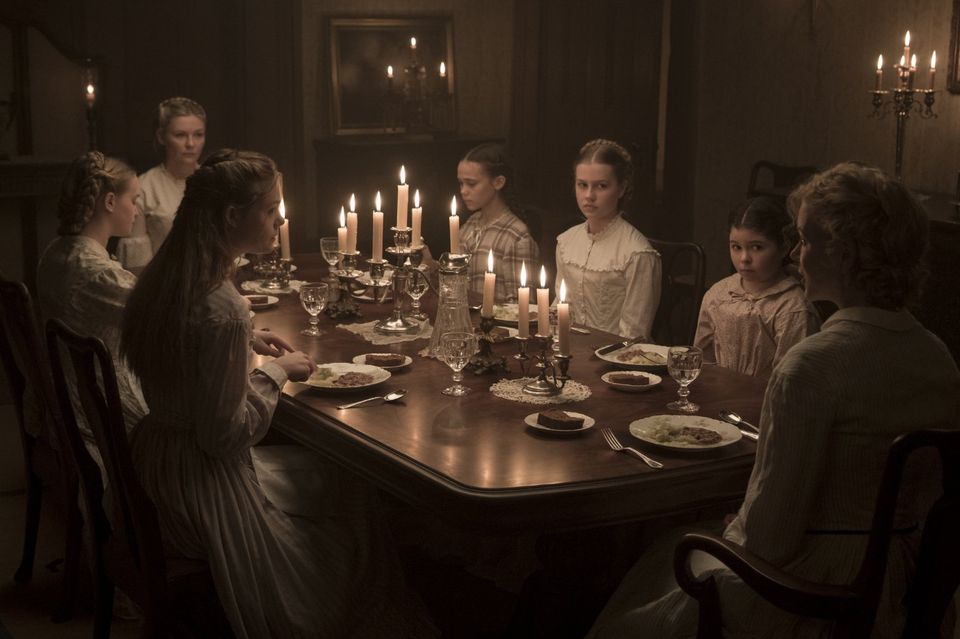by JOANNE LAURIER
 The Beguiled, written and directed by Sofia Coppola, is based on the novel by Thomas P. Cullinan
The Beguiled, written and directed by Sofia Coppola, is based on the novel by Thomas P. Cullinan
Sofia Coppola’s new movie, The Beguiled, is based on the 1966 novel of the same title by Thomas P. Cullinan, as was a 1971 work directed by Don Siegel and featuring Clint Eastwood.
Set during the American Civil War, Coppola’s version is a historical drama from which virtually all significant historical material has been excised. It shrinks the story to an abstract, psycho-sexual fantasy that is essentially unconvincing and insubstantial. Along the way, the new film demonstrates once again how contemporary gender and racial politics tyrannizes over much of current cultural life.
The action in The Beguiled is restricted to the grounds of a girls school in Virginia in 1864. The Farnsworth Seminary, located in an old plantation house, is run by Martha Farnsworth (Nicole Kidman). Its student population has been reduced to five by the war. While in the woods searching for mushrooms, one of the youngest students, Amy (Oona Laurence), discovers a Union soldier, Corporal John McBurney (Colin Farrell), suffering from a serious leg wound. “The slaves left,” she tells him.
Spinster headmistress Martha decides to nurse the “enemy” soldier until he recovers. The plan is then to turn him over to the Confederate army. Instead, McBurney’s presence generates tensions that have an impact on every member of the household. Particularly affected is teacher and second-in-command, Edwina Morrow (Kirsten Dunst), who comes from a wealthy background. “Any breath of air from the outside world should be welcome,” is her initial reaction. Meanwhile the bored, sultry, teenage Alicia (Elle Fanning) is bent on seducing the male intruder. Instinctive fear of a Union soldier is apparently supplanted by a war for John’s affections that leads to a disturbing denouement.
Coppola’s The Beguiled is a tedious and limp work. Its characters, for the most part, are selfish and unappealing. The Union soldier is essentially a quasi-mercenary, who deserted the battlefield–a Northern combatant with no feeling for the anti-slavery cause.
The sexual desperation of the women, around which the film revolves, is not especially credible. After all, they are not marooned on a desert island. On the contrary, they are (presumably) surrounded by male soldiers preoccupied with survival. And why are they themselves not more worried about the threat of death? Why are they not consumed by the need for food and firewood? Where do their abundant meals come from, on a plantation bereft of livestock or edible vegetation? And despite the acute hardships of war–the bloody Civil War no less–these women, adolescent and older, are entirely focused on their libidos!
WSWS for more
